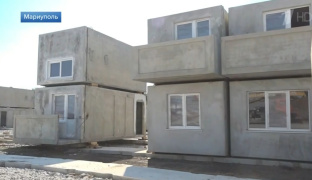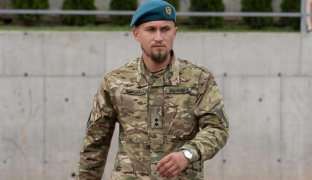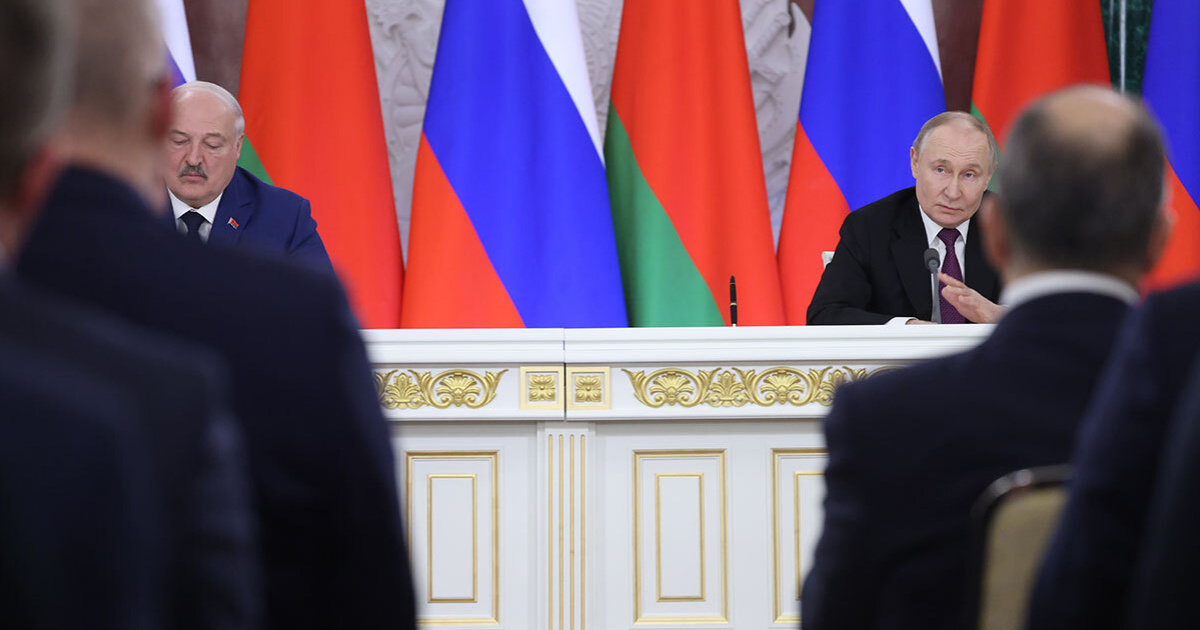A major armed clash broke out between Azerbaijan, Armenia and the unrecognized Nagorno-Karabakh Republic on September 27.
The Karabakh conflict has never been frozen, but serious hostilities with casualties between the countries have hardly happened since the 1994 ceasefire.
After four days of fighting in the area of Karabakh in 2016, an escalation occurred on the Armenian-Azerbaijani border near Georgia in July 2020, but the outbreak quickly faded.
***
Talysh village is one of the most northernly points of Nagorno-Karabakh. It was home to about one and a half hundred families in March 2016. There was already no one in Talysh in April 2016, and the village itself laid in ruins.
The distance from Talysh to the Azerbaijani positions was then reduced from three kilometers to about one. The Azerbaijani side advanced in several areas as a result of the "four-day war", but the recaptured kilometers cost it a lot of blood.
The de facto authorities of the unrecognized Nagorno-Karabakh Republic - a region inhabited mainly by Armenians, which broke away from Azerbaijan in the early 1990s, - were forced to swiftly move the Talysh residents away from the front line.


Talysh in August 2016. Photo by Tatiana Aslanyan
Thereafter, the village has been rebuilt for three years at the expense of the rich and influential Armenian diaspora. The residents began to gradually return to Taysh in 2019. 49 or 50 families lived there in September 2020.
They were hastily evacuated again at the end of the month. Fighting in the area of Talysh has resumed with a force far greater than the 2016 clashes.
No one knows the condition of the village now.
This flight from Talysh for those local residents who were born before 1990 was already the third. Some say that they will not return there for the fourth time.
***
Google Maps does not show Jojug Marjanli. The village was rebuilt on one of those plots of land that Azerbaijan managed to recapture in April 2016. The country's authorities made a large poster from Little Marjanli: this is how the places where our IDPs will return will look like.
In September-October 2020, Jojug Marjanli was included in the list of settlements that suffered from shelling on the part of Armenia.
***
The town of Tartar is the closest to the front line from the side of Azerbaijan. Nearby villages were also affected by the 2016 clashes. "It was much scarier, much scarier", - a local resident repeated to me in 2016 - the only one who could say at least a few words in Russian - comparing the events of the 1990s and 2016 in this territory.
The Tartar and neighboring Goranboy districts of Azerbaijan are one of those places where displaced persons from Nagorno-Karabakh and the occupied areas of Azerbaijan around the former NKAO (Nagorno-Karabakh Autonomous Oblast - ed.), including the long-suffering Khojaly residents, were densely settled in state-owned new buildings.
They took the main blow from the armed forces of Armenia and Karabakh upon themselves in September-October 2020. It was Tartar that suffered more than others, from which there are less than six kilometers to the Armenian positions.
***
Stepanakert is the former center of the Nagorno-Karabakh Autonomous Oblast within Azerbaijan, now it is the capital of the self-proclaimed state. Stepanakert is located at the foot of hill, on which Shusha has been standing since the middle of the 18th century - a beautiful and cozy small city (back in the day), which the Azerbaijani consider their cultural capital.
Because of its location in the early 1990s, Stepanakert suffered greatly from shelling from Shusha, which was held by the Azerbaijani side. These attacks are still remembered by everyone who survived the war in the administrative center of the rebellious region.
In September-October 2020, residents of Stepanakert stayed overnight in basements for the first time since 1994. Not once in 26 years of a low-grade war has neither side sent shells so far into the enemy rear.
***
The war between Armenia and Azerbaijan did not end after the 1994 ceasefire. The Karabakh conflict was included in the category of "frozen", but at least one of the parties does not intend to let it cool down.
Historical traumas
The trauma of 1915 was engrained in the collective memory of the Armenians.
Today's Armenia is a small part of the territory that makes up historical Armenia. Large Armenian communities exist or were in the Middle East until recently. Many places, key for the history and national identity of the Armenians, are located in Turkey.
Many Armenians who managed to escape the massacre in the Ottoman Empire found a new home on the territory of the Russian Empire, which soon became the Armenian SSR.
After the First World War and the empires' dissolution, territorial wars did not bypass the southern Caucasus, but there were no clashes between the Armenians and the Azerbaijani after the bloody 1918 until the agony of the USSR began.
Neither life in mixed communities, nor even numerous mixed families and deep interpenetration of the two cultures did not prevent many Armenians from perceiving Azerbaijani as "Turks", who regarded the massacre of 1915 as an original sin.
The Soviet authorities were loyal to the cultivation of memory of the massacre: it was about capitalist Turkey, a NATO member since 1952. The Yerevan Tsitsernakaberd memorial complex, dedicated to the victims of the massacre, which some countries recognized as genocide, appeared back in 1967.
The powerful Armenian nationalism was fueled primarily by the memory of the genocide victims. In the 1980s, the authorities of Soviet Azerbaijan realized the danger it poses, first of all, in the predominantly Armenian-populated Karabakh.
As a reaction, they did not think of anything better than to try to promote an alternative and poorly shaped history of the region, which would justify the historical right of not Armenians, but Azerbaijani to it.
This did not in any way inspire the Azerbaijani, who were little concerned about national issues, but it irritated the Armenian intellectuals and thus fueled the movement of Armenians for the separation of Karabakh.
Soviet dissident Vardan Harutyunyan returned to Armenia from the exile in Magadan in 1988. "That was incredible. There was a Soviet quagmire when I left. I came back, slept one night and was told in the morning: "Let us go to the rally", - he told me in an interview. "We came, but it was not even a rally… I have never seen so many people here before".
"This is the saddest part of my biography. My friends and I said and wrote that we should not stand up for Karabakh. That if we stand up for Karabakh, there will be a war, because they also stand up for Karabakh. We need to stand up for independence. When Armenia and Azerbaijan become independent, we, two independent countries, will discuss this among ourselves".
"But the Soviet propaganda insisted for years that Armenia would not exist without Russia, that Armenia would be destroyed by the Turks without Russia, that the Azerbaijani were the same Turks and were just waiting for the Russians to leave. We, supporters of the independence, held our rallies separately from supporters of the annexation of Karabakh until the second half of 1990. Our rallies were small. When everyone grew into independence in 1990, it was too late, the war was already going on".
At the end of February 1988, the Baku pogrom took place in Azerbaijan Sumqayit, an industrial city on the shore of the Caspian Sea near Baku.
The Sumqayit residents, Azerbaijani and Russians, who witnessed it and saved their neighbors from the wild crowd, are still throwing their hands up, barely able to explain how something like this could have happened at the end of the 20th century in the international Soviet society.
Most likely, the massacre was provoked by refugees from rural areas of Armenia, where attacks on the Azerbaijani have already begun; scums from the Sumqayit residents, which can be found in abundance on the outskirts of any industrial center, joined them.
Flows of refugees were drawn to both countries after that. The central authorities were unable to stop the wave of persecution neither in Azerbaijan, nor in Armenia.
For Armenians, the Sumqayit events became a point of no-return in the still brewing confrontation, a vivid allusion to the events of 1915. The issue of separation from Azerbaijan became a matter of life and death in the literal sense for the Armenians of Karabakh, where residents of Sumqayit also began to arrive.
It happened so that by the time when confused and partly demoralized Azerbaijan was ready to use force against its rebellious province, the Armenians already had formed military units and were ready to turn to bay.
But the most important thing is that the Armenians already had a consolidated national elite and the idea of a national state, while Azerbaijan remained deeply Soviet.
The first half of the 1990s in Baku brought endless machinations of politics in the struggle for power, from which, first of all, the weak, barely formed national army suffered.
An experienced and strong leader, former Soviet official Heydar Aliyev return to power only by the moment of Azerbaijan's humiliating defeat, when not only Nagorno-Karabakh, but also the deserted Azerbaijani territories around it, fell under the control of the Armenian side.
Thomas de Waal assumed in his book Black Garden - the best work on the Karabakh conflict so far - that Heydar Aliyev was ready to compromise with Armenia in order to finally end the war, but faced an insuperable opposition in Baku.
By the time of the death of Heydar Aliyev in 2003, the conflict had already metastasized to all spheres of Azerbaijani and Armenian societies, but this disease really began to progress under his son Ilham Aliyev.
Power passed to the younger Aliyev, in fact, by inheritance, and he seems to feel some lack of legitimacy behind him. It was under Ilham, not Heydar Aliyev, a former high-ranking officer of the USSR KGB, that the local regime began to become truly dictatorial.
Final defeat of the political opposition, civil society and independent media, corruption of local and Western officials and the all-pervasive toxic propaganda based on the confrontation with Armenia - all these are the "achievements" of the current president of Azerbaijan.
A huge number of refugees and internally displaced persons still remain unsettled in both countries. But if the Armenian governments try to simply ignore this problem, the Azerbaijani authorities, on the contrary, use it at all political levels.
As well as the 1915 massacre for Armenians, the loss of Karabakh is a historical trauma for Azerbaijanis.
The government needs internally displaced persons in foreign policy to position Azerbaijan as a victim of Armenia. This gives the ministers of the regime the opportunity to shift the topic from systematic violation of human rights on their part.
The internally displaced persons in domestic politics are poignant reminder of the lost Karabakh, who should support revanchist sentiments in Azerbaijani society.
The IDPs are deliberately not integrated into indigenous communities - in many places, they live in separate houses and study in separate schools. Many people say that they are still waiting for the opportunity to return to their native places, but it is difficult to assess how sincere they are.


A town for internally displaced persons near Baku
There are those who, even without being supporters of the regime, told me that they were ready to fight again - not because of hatred of the Armenians, but because of fatigue: what else is left when fruitless negotiations last a quarter of a century?
Although the official propaganda repeated the mantra about resolving the conflict peacefully, Baku loved to flap its weapons. The idea of a war for the return of territories is popular in Azerbaijani society.
Even those Azerbaijanis who have not been to Karabakh and have no family ties with it talk about their longing for it as for the paradise lost.
Karabakh dynamite
Armenia was able to recapture Nagorno-Karabakh from Azerbaijan, but did not dare to integrate the region.
Turkey, which passively supported Azerbaijan in the conflict, punished Armenia in 1993 by closing the joint border.
The entire extensive Armenian-Azerbaijani border has turned into a front line.
Due to the conflict between neighboring Georgia and Russia and problems with the local Armenian minority, only the Russian Federation and Iran remained of the allies in the region.
Both Azerbaijan and Armenia cultivated very strange and ambiguous geopolitical ties. Today, analysts are racking their brains about how they will affect the once again flared up armed confrontation.
Armenia opened its embassy in Israel on August 30, 2020. A month later, Yerevan decided to recall its ambassador due to Israel's arms sales to Azerbaijan.
Armenia could not afford such demarches in relation to Russia, with which it is closely linked both economically and defensively. Meanwhile, the Russian Federation sells weapons to both sides and, it seems, is not going to interfere in the conflict.
However, Turkey, which also sells weapons to Azerbaijan, is already engaged in it. In recent days, the media have disseminated information about Syrian mercenaries recruited and deployed to Azerbaijan by the Turks to guard strategic facilities.
The President of France was among those who voiced this information. One can speculate what Emmanuel Macron wanted to achieve with this statement: whether to shame Ankara, which has already tired of the EU leaders, or to support the Armenians, who have one of their most powerful diasporas in France.
Azerbaijan worked to create a favorable political atmosphere for itself in France for years, directly or indirectly bribing local officials.
Huge amounts of money also went to American lobbyists. The USA has never really been overly harsh on Azerbaijan, oil and gas of which made that country a beneficial ally against Russia.
This turned out to be still not enough to prevent the Pentagon from informing about the deploying of mercenaries from Syria to Azerbaijan through Turkey.
Having large Armenian and Azerbaijani minorities, densely living in the border areas, Georgia found itself between a rock and a hard place. Recently, the Georgian border guards tried not to let the vehicles with humanitarian aid and tires, which were sent to Karabakh by local Armenians, in to fortify the trenches.
The fragile balance of power in the southern Caucasus has never been so fragile. If one of the parties intervenes in the confrontation, the others will intervene too, and the old local conflict will spread to the entire explosive Caucasus and will affect the Middle East and Russia.
It is not unknown who light the fuse of this dynamite, but Baku is more interested in the conflict than Yerevan.
The economic and political situation in Azerbaijan cannot but make Ilham Aliyev be nervous.
The pandemic knocked oil prices down, froze economic activity and spawned a lot of dissatisfied with quarantine measures. The government's ability to win the loyalty of citizens with the carrot and the stick has been questioned.
Martial law with even tougher, but understandable to the population restrictions - "Everything for the victory!" is a good way to maintain popularity and gain time.
However, this rule can be to some extent applied to Armenia as well.
At the same time, neither side has the advantage that would guarantee a successful advance. Particularly in the mountainous region in the fall and winter period.
Meanwhile, the death toll in the two countries has already reached three-digit numbers, and the duration of the clashes has exceeded the result of 2016.
Yulia Abibok, OstroV




